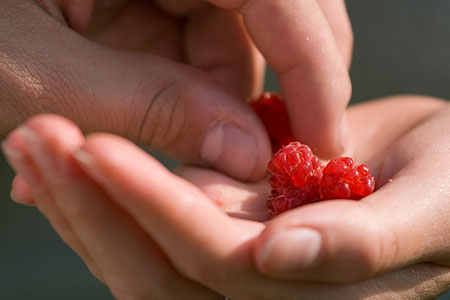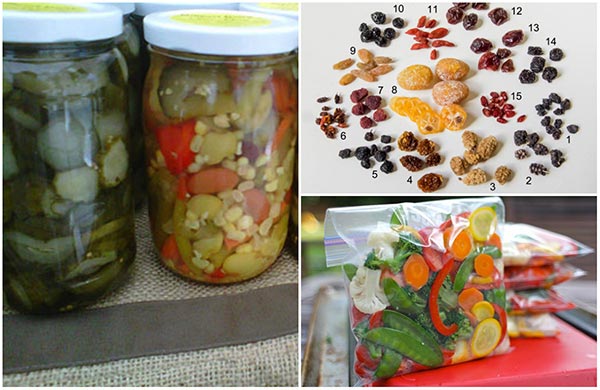6 Ways to Preserve Your Fruit and Vegetable Harvest
It’s ok to admit it: canning is not always all it’s cracked up to be. It means a hot kitchen on what will probably be a hot day. It means clamps and jars and tongs and really big pressurizers. It means spending a whole day feeling like your in a sauna-like factory.
But what’s a clever DIYer with a green thumb to do when they’ve been blessed with a plentiful harvest? There’s no way your conscious could let these delicious and nutritious goodies go to waste. Luckily, when it comes to preserving our hard-fought harvest of fruits and vegetables, there are a lot of great (and simple) options.
4. Infuse for prime cocktails year-round.
Adding a bit of your favorite fruit to your favorite alcohol isn’t only for sangria lovers. Try dropping a few apricot slices into a bottle of vodka or put your rosemary to good use in some dry gin. If you’re not much for hard alcohol, you can use this infusion method with vinegar to make tasty marinades and salad dressings.
5. Share your spoils with your neighbors (but before they spoil).

Admittedly, this tip is not a preservation method as much as a way to make new friends and avoid wasting any of your precious harvest. Summertime is when all of us are stretching our legs, soaking up some sun, and spending time outdoors, so make a point to say hello and share in the joys of summer by sharing your extra fruits and veggies. Chances are that even if they don’t have a green thumb to help them repay the favor, a batch of cookies may just find their way to your door in those cold winter months.
6. Ok, if you really want to can, go ahead and give it a shot.

You have some options when it comes to canning: hot water or pressure canning. Decide on your method and check to make sure that the equipment you have matches, especially the lids of the jars. You’ll need a large pot, sterilized jars with lids and rings, a thermometer, tongs, your foods-to-be-canned, and a day that’s not sweltering hot.
For the hot water method, follow these hot but simple instructions: Get your hands on a trusty recipe and prepare your food to be canned. Then, fill your sterile jars, add the lid and ring, and tighten it. Your large pot should be about halfway full and 140-180 degrees Fahrenheit. You can then add your canned goods. Poor boiling water into the large pot and over the jars completely, bringing the whole pot to a lively boil. Check your recipe, and let the cans stand for the required amount of time. Once the timer rings, remove the jars with extreme caution as they are extremely hot, and check that all the seals are tight 24 hours later.
Foods low in acid must be canned by pressurization. For this method, you can skip the step of sterilizing jars and lids as they high heat will take care of any bacteria. The downside is you must have a pressure canner. This can be an expensive investment, so make sure you like canning before dropping the cash. Follow the directions that come with the canner to determine the appropriate amount of water. Set the jars in the pot then attach the lid and make sure it’s fastened and secure. The water should heat until steam flows and a hissing noise can be heard. This steam should keep flowing for 10 minutes, so turn up the heat if necessary. Then close the petcock and allow the jars to pressurize. Lastly, turn off the burner, let the pressure drop to normal levels, and use caution when removing the hot contents. Make sure to consult your recipe and the instructions of your pressurizer.
page 2 of 2
 Home and Gardening Ideas At home and Gardening ideas we believe inspiring readers about homesteading, self sufficiency
Home and Gardening Ideas At home and Gardening ideas we believe inspiring readers about homesteading, self sufficiency






